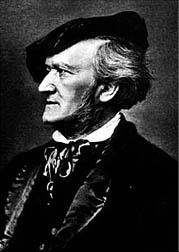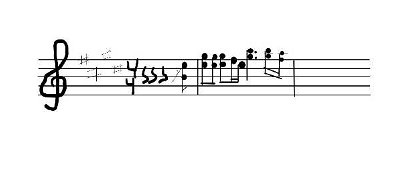10. In Verdi's eponymous opera, how does Aida die?
From Quiz Empedocles Goes Classic - Earth
Answer:
She is hidden in the tomb where Radames will be buried alive
Giuseppe Verdi (1813-1901) was a prolific Italian opera composer, most famous for his choirs in operas. His very well known opera "Aida" (premiered in 1871) was one of the highlights in his career.
Aida is an Ethiopian princess, slave to the Egyptian pharaoh. She is secretly in love with Radames, a great Egyptian warrior. Amneris, Pharaoh's daughter, would like to marry Radames, but her love is refuted.
Radames is chosen as the commander of the Egyptian army to fight against an Ethiopian revolt, led by Aida's father Amonasro. After the battle, Radames is granted a triumph ("Gloria all'Egitto" - the Triumph march) and brings Amonasro in chains.
Amonasro escapes and instigates Aida to find out where Radames will battle. Amneris overhears Radames' betrayal. The High Court condemns Radames for high treason and sentences him to be buried alive.
In the final scene, Radames is entombed and then finds out that Aida is hidden in the tomb. They die in each other's arms.
The pyre is associated with Joan of Arc (operas by Pyotr Tchaikovsky, Michael Balfe, Arthur Honegger...), Queen Dido of Carthage (opera by Henry Purcell) or Brünnhilde the Valkyrie ("Götterdämmerung" by Richard Wagner).
In one of the alternative endings to Tchaikovsky's ballet "Swan Lake", the white swan Odette drowns herself.
Consumption is the fate of, among others, Violetta Valery ("La Traviata" by Verdi) and Mimi (the heroine in Giacomo Puccini's "La Bohème").

 Quick Question
Quick Question In this Photo Quiz, can you identify these composers from their portraits? I've given you a few other clues as well!
In this Photo Quiz, can you identify these composers from their portraits? I've given you a few other clues as well!  ...Unless you know how to read sheet music. I've copied a few bars of sheet music of ten different highlights of baroque and classical music. What do you know about these musical highlights? Take your instrument and play, or hum - it might inspire.
...Unless you know how to read sheet music. I've copied a few bars of sheet music of ten different highlights of baroque and classical music. What do you know about these musical highlights? Take your instrument and play, or hum - it might inspire.  = Top 5% Rated Quiz,
= Top 5% Rated Quiz,
 Top 10% Rated Quiz,
Top 10% Rated Quiz,
 Top 20% Rated Quiz,
Top 20% Rated Quiz,
 A Well Rated Quiz
A Well Rated Quiz